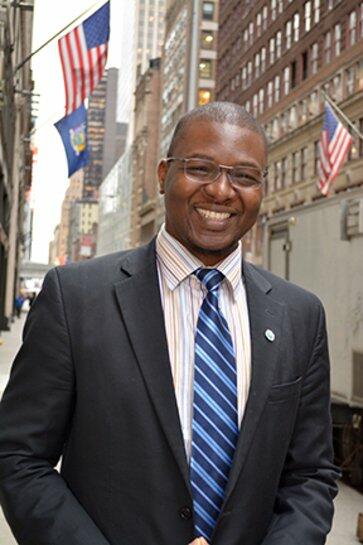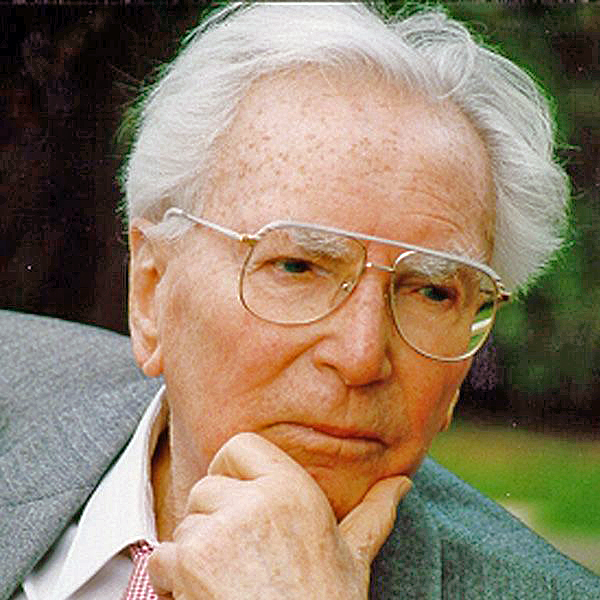
The Wounded Healer Paradigm: A Spiritual Approach to Comflict Resolution (Le paradigme du guérisseur blessé: une approche spirituelle de la résolution des conflits)
By Drissa Kone

The term “wounded healer” was first coined by psychologist Carl Jung. It described the healing of the patient while the healer himself is in pain. For most people, the immediate reaction to hurt and pain is the fight or flight paradigm.
The flight or fight human response is similar to what animals do when in danger. From this perspective, protecting oneself, and in most cases, taking revenge against one’s oppressor became highly valued.
The flight-fight response was challenged by an alternative response to threat. Victor Frankl, the 20th century psychiatrist, impacted the world with his view of the stimulus and response to suffering and torture. He himself was tortured in a Nazi concentration camp and while enduring suffering, he discovered the truth about human response to pain and hurt.
He said: “Between stimulus and response there is a space. In that space is our power to choose our response. In our response lies our growth and our freedom.” In fact, in a conflict situation, we can chose to flight or fight but also to treat our opponent as a patient, a person who is also hurt and needs help. Frankl’s experience in the concentration camp opened a new paradigm to resolving conflict in our everyday relationships.
Conflict is a sad reality of our everyday human experience. Historically, religious conflict has often led to misunderstanding and division between people. The Unification Movement, founded in 1954 by Rev. Sun Myung Moon, which aims to bring peace between people from different faiths and cultures, is facing internal turmoil. Though the Unification Movement has been a major advocate of unity among religions, it currently faces internal division and conflict.
Could the wounded healer paradigm be applied to the current conflict to bring the divided family back together again? Can the conflict be seen from a spiritual dimension? A spiritual approach to conflict includes the search for human soul, which also extends to the death of ego and the emergence of the spirit.
During the first 40 years of its development (1954-94), the Unification Movement flourished under the charismatic leadership of Rev. Moon. Father Moon’s wife, Mrs. Hak Ja Han Moon, began to take a more prominent leadership role in the worldwide movement with the establishment of the Women’s Federation for World Peace (1992).
By 2010, the worldwide movement was faced with the reality of conflict. On September 3, 2012, Rev. Moon ascended to the spirit world. Shortly after his passing, Mrs. Moon announced to the worldwide membership she would continue to lead the Unification Movement forward and complete the work of her husband.
Mrs. Moon’s eldest and youngest living sons, Hyun Jin and Hyung Jin Moon, do not believe Mrs. Moon, their mother, should be leading the worldwide movement, and lead breakaway organizations. Conflicts between Mrs. Moon and her two sons have led to the fracturing of relationships and leave-taking by some throughout the worldwide movement, with many people seeing no resolution in sight.
In any relationship where conflict is present, we have to acknowledge how our own actions and behaviors have caused pain to others. From this perspective, we have a better chance to resolve the conflict, instead of blaming, judging, and finding fault in “the other.” How to heal the pain and any unresolved psychological wounding becomes the primary orientation to resolve the conflict. Addressing conflict from this vantage point creates needed space to go beyond our own limited, strongly held beliefs, and allows us to see “the other” in a different light.
In any relationship there is a potential for hurt, misunderstanding or division. When emotional pain or unresolved resentments are present in a relationship, it is helpful if each party is able to acknowledge this reality in an honest and constructive manner. In the present conflict, we are led to believe it’s all about conflicting and competing ideologies and theologies, exacerbated by the bad behavior of misguided, corrupted leaders.
However, a closer look reveals unresolved emotional and psychological wounds that have not been adequately acknowledged and addressed. If we are not aware of our own unresolved emotional pain and refuse to acknowledge and deny this aspect of ourselves, there are fewer chances to effectively resolve the conflict itself. When we are so consumed with our own pain, when our own pain controls us, we play the victim and can no more listen to the pain and suffering of others. So we easily judge, condemn, reject, and push away others.
In fact, when we choose to become the wounded healer, we create the possibility for unity and peace and on that foundation, God’s providence can move us forward. When we choose to withdraw, to blame, and to retaliate, then we allow disunity and only our ego is victorious. All unresolved conflicts are the manifestation of human ego. For a peaceful soul to emerge in us, the ego must die; as the Holy Scripture say, “Truly, truly, I say to you, unless a grain of wheat falls into the earth and dies, it remains alone; but if it dies, it bears much fruit” (John 12:24). This is incontestably the path to human maturation and the peaceful resolution to any conflict.
Christ was wounded, tortured, and finally crucified for calling himself the “Son of God.”
Even though Christ was wounded, he became a healer of the world. This could be considered a classic spiritual path to resolve conflict between individuals and groups. As he said while hanging on the cross, “Father, forgive them…” His attitude toward his enemy became a universal message known as the Gospel, the good news and the hope for humanity. This model set the pathway for all of us to symbolically die every day, not only for those we love and care for, but also to heal our enemies.

Viktor Frankl (1905-97).
Rev. Moon, had been badly tortured in North Korea from 1948-50. He was in a concentration camp in Heung Nam where he almost lost his life were it not for the UN forces intervention. Forty years later, in 1991, Father Moon decided to meet his so-called “enemy,” Kim Il Sung, with the spirit of love, forgiveness and unity. As he said, “Now, I have visited North Korea in my position as the founder of the Unification Church and in the spirit of True Love. True Love is that love which loves even that which cannot be loved. It is the love that Jesus spoke of when he told us to love our enemies.”
Unity and peace depends on the genuine and sincere will for all parties to want to forgive, unite and love again. What brings healing to enemies is not necessarily proving them wrong but engaging in a sincere dialogue to seek for mutual understanding. When the focus is about who will win over at the end it sustains a perpetual conflict between parties. Additionally, a “win-lose” spirit inflates the ego and promotes mistrust between groups. It is driven by the idea that someone has to be subdued or punished at the end and no one would like to experience losing a fight. In fact, the win-lose mentality ultimately leads to a lose-lose result for all parties in a conflict. The wounded healer paradigm demands that parties in conflict come to an integrative solution that preserves the dignity of all. Perhaps the wounded healer paradigm can serve as the model to heal the divided among the different parties of the Unification Movement.
The current framing of the conflict tells us someone is right and someone is wrong. It insists the “others” change their viewpoint and come around to the “correct” viewpoint. It’s about someone having “God’s point of view” and someone not having God’s point of view. It’s about someone being on “God’s side” and someone being on “Satan’s side.” This approach emphasizes polarity and division. It increases the level of mistrust and distrust between parties in a conflict and their followers. There is no doubt that Mother Moon loves all her biological children and she also extends her love to all Unificationists expecting them to fulfill their responsibilities in uniting with her. However, when wounds and pain are part of the relationship, a healing approach is most effective compared to other methods.
Here are some suggestions to bring healing:
- Form a small committee that represents all parties in the conflict: There are always two sides of a story in each conflict and the purpose of a committee is to provide a safe environment to hear each other’s sides of the story.
- The committee will listen to the deepest concerns and aspirations of all parties: Therapeutic listening is applied in seeking healing in the process.
- The committee will draft win-win proposed solutions: Parties own their solutions to the conflict, and are not mandated to them.
- The committee shares the proposed solutions with the leaders of each party and gets their feedback.
- When all parties accept the final resolution, the committee takes action to organize a symbolic ceremony, which includes all.
- The committee then reports the final resolutions to the larger Unification Movement.
The wounded healer paradigm approach to resolve conflict can be very challenging for those who dwell only in their pain. It takes courage, humility, and patience toward “the others.” At first, it can appear as losing, but only the ego is losing and our authentic self is emerging. The process can be painful and even humiliating at times. However, if done well it can be rewarding and beneficial for the whole. Parties can also choose to refute the wounded healer approach and repeat the failure of history. It is true, peace starts with each one of us, but to make peace with the enemy, an emotional price is sometimes paid in the process. What each party will have to let go of is something to heal the fracturing relationship.
When we successfully resolve the internal matter, then it will impact the external. When we unite within the Unification Movement, it will impact the external world. The success could create the condition for ushering the coming of the kingdom of heaven on earth as the founder of the Unification Movement prophesized years ago. Lastly, let us remember the closing words of the famous poem by Father Moon “Crown of Glory”: “…But when I loved those who acted against me I brought victory. If you have done the same thing, I will give you the crown of glory.”♦
Dr. Drissa Kone is Director of Student Life and an adjunct faculty at UTS. He is also the local minister of the Belvedere Family Community in Tarrytown, NY. Dr. Kone was born and raised Muslim in the Ivory Coast and joined the Unification Movement in 2003. He earned his M. Div. in spiritual counseling at UTS in 2012, and an M. A. in diplomacy, specializing in conflict management and negotiation, from Norwich University in 2014. He obtained his D. Min. in peace and justice from UTS in 2016, focusing on transformational leadership and the effective management of cross-cultural conflict between communities.

